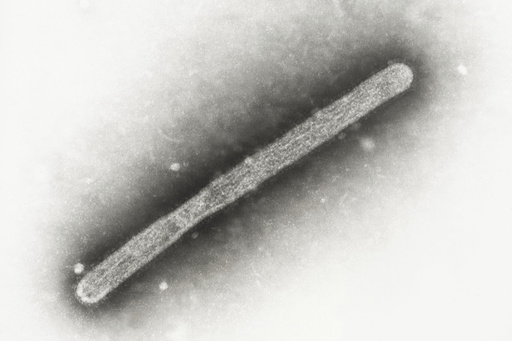
Health authorities announced on Thursday that they found no evidence indicating the transmission of bird flu between individuals following an investigation into an unusual case in Missouri.
Reports of this particular infection emerged last month and differed from the 30 other bird flu cases documented among people in the United States this year. The majority of these cases were associated with farmworkers who had interacted with infected dairy cows or chickens.
In the Missouri instance, there was no known contact with an infected animal, prompting health officials to conclude that this remains the only plausible explanation for the infection.
Dr. Demetre Daskalakis of the Centers for Disease Control and Prevention emphasized, “There is no evidence of person-to-person transmission.” The H5N1 bird flu has considerably circulated among wild birds, poultry, and other animals across the U.S., which elevates the risk of human exposure to the virus, according to officials.
The latest confirmed human cases involved two workers from a commercial egg farm located in Franklin County, southeast Washington. The remaining cases include 15 in California, 10 in Colorado, two in Michigan, and one in Texas, along with the atypical case from Missouri. Most reported symptoms have been relatively mild, often encompassing eye irritation.
Limited information has been disclosed regarding the Missouri case. The affected individual had existing health issues and was hospitalized towards the end of August. Initial tests indicated a positive result for influenza A, a broad category of flu viruses. Subsequent analysis identified partial genetic sequences that were similar to bird flu viruses found in U.S. dairy cows.
Given that the patient did not work on a farm and had no known exposure to infected animals, officials were considering the possibility of transmission from another individual who may have remained undiagnosed. Such transmission would raise concerns that the virus might evolve into a more significant threat to humans.
Health authorities conducted complex blood tests on the patient, five hospital staff members, and a person categorized as a “household contact” of the patient, searching for antibodies that might indicate a previous infection. The household contact experienced gastrointestinal illness concurrently with the patient but was not tested at the onset.
CDC officials disclosed on Thursday that blood tests for the healthcare workers returned negative results. The patient and the household contact displayed signs suggesting prior infection in one series of tests, but not in others. Neither individual met the blood testing criteria set forth by the World Health Organization for a confirmed bird flu case. Hence, the household contact remains excluded from the U.S. case tally.
Since both individuals fell ill simultaneously, officials hypothesize that they were likely both exposed to an unidentified animal or animal product together, dismissing the possibility of the virus spreading between them, as stated by Daskalakis.
